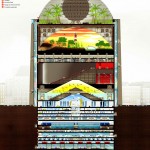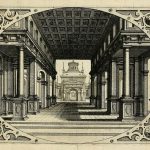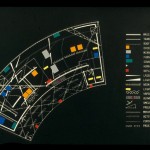The Monument to the Victims of the Concentration Camps was designed by the Milanese architecture group BBPR in 1945 in the weeks following the Liberation day and located at the centre of the main axis in Milan’s Cimitero Monumentale (Monumental cemetery). The work embodies the new beginning of the professional activity of the group after World War II, marked by the loss of one of its founding members, Gianluigi Banfi, who had died in the Mauthausen concentration camp.
The memorial might be considered both a work of architecture and a sculpture, and it is a strictly non-figurative piece in a will to embody universal meanings and allow different groups to recognise themselves in the structure.
The monument, which has the ambition to be non-rhetorical, is a tridimensional grid with 212 cms sides which is formally developed from the intersection between a cube and a greek cross. The carefully controlled structure is made up by steel tubes joined together and painted white. The grid is completed by white marble and black granite slabs featuring inscriptions. A layer of marble in the form of a cross separates the cube from its base and a glass box filled with earth from Mauthausen and barbed wire is located at the center of the structure.
The memorial existed in three version: the first one, built in 1946 was rapidly deteriorated by air pollution; a second one, executed in 1950 was made in bronze, painted black with a different distribution of the marble slabs; in 1955, after the bronze got corroded, a third version of the monument was erected, more similar to the original one.
Further reading:
Bruno Reichlin: The idea of monument according to BBPR. The German concentration camp Memorial in Milan, 1946. Via: chiaraocchipinti.net









Images via Niccolò Bargagli




J’adore! Un projet magnifique et fascinant qui renouvelle la notion de monument, un chef d’oeuvre de ce point de vue. Et Reichlin est super bon sur le sujet. Bravo, très beau post!
Excellent! I never knew about this monument before. Architecture and art in one impressive, simple and minimalist monument.